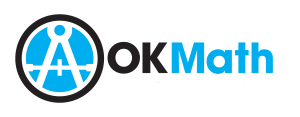24
2017
RME Part 2 – The Dutch Asked It
In many ways, utility has long been a fundamental aspect of instruction and, more importantly, of the desire to learn. The apprenticeship model is widely considered as the most prominent form of instruction from a historical perspective. Throughout the ages, mastery was achieved through imitation combined with direct instruction, performance, and reflection. The iterative nature of the apprenticeship inherently developed the knowledge and skills of the apprentice while revealing new aspects of the knowledge base in a spiraled process that arose out of necessity. Through the formalization of public, compulsory education, apprenticeships decreased and, taking their position in the modernized educational institution, lectures increased.
In the 1960s, however, reform movements began to gain momentum and the Dutch found themselves increasingly fighting to withstand the American structural reformation of New Math (Van den Heuvel-Panhuizen, 1996). After the development of a committee that sought to modernize the Dutch mathematics curriculum, the Institute for Development of Mathematics Education was established in 1971, and Hans Freudenthal (1905-1990) found his foothold for the development of Realistic Mathematics Education. Regarding education, Freudenthal argued “it must be connected to reality, stay close to children and be relevant to society in order to be of human value” (p.10). In essence, Freudenthal’s stance was that mathematics is a human activity, not simply a subject matter. To become familiar with it is not to understand its structural, chronological development, but to understand its interactions and utilizations. Perhaps the bored student inherently desires the same understanding.
The simplicity of Realistic Mathematics Education is astounding: treat students as active participants in the development (or re-invention) of the mathematical tools and insights (Gravemeijer & Doorman, 1999). Freudenthal argued further that the assumption that students could readily “cough up pre-digested material” (Van den Heuvel-Panhuizen, 1999, p. 11) is not only unrealistic, but also ineffective. Therefor, students must be presented a situation in which they can imagine themselves, with agency, creativity, and purpose in mind. This, according to Van den Brink and Wijdeveld (cited in Van den Heuvel-Panhuizen, 2003), is where Realistic Mathematics Education got its name.
Part 1 // Part 2 // Part 3 // Coming Soon Part 4

 An article by
An article by 




